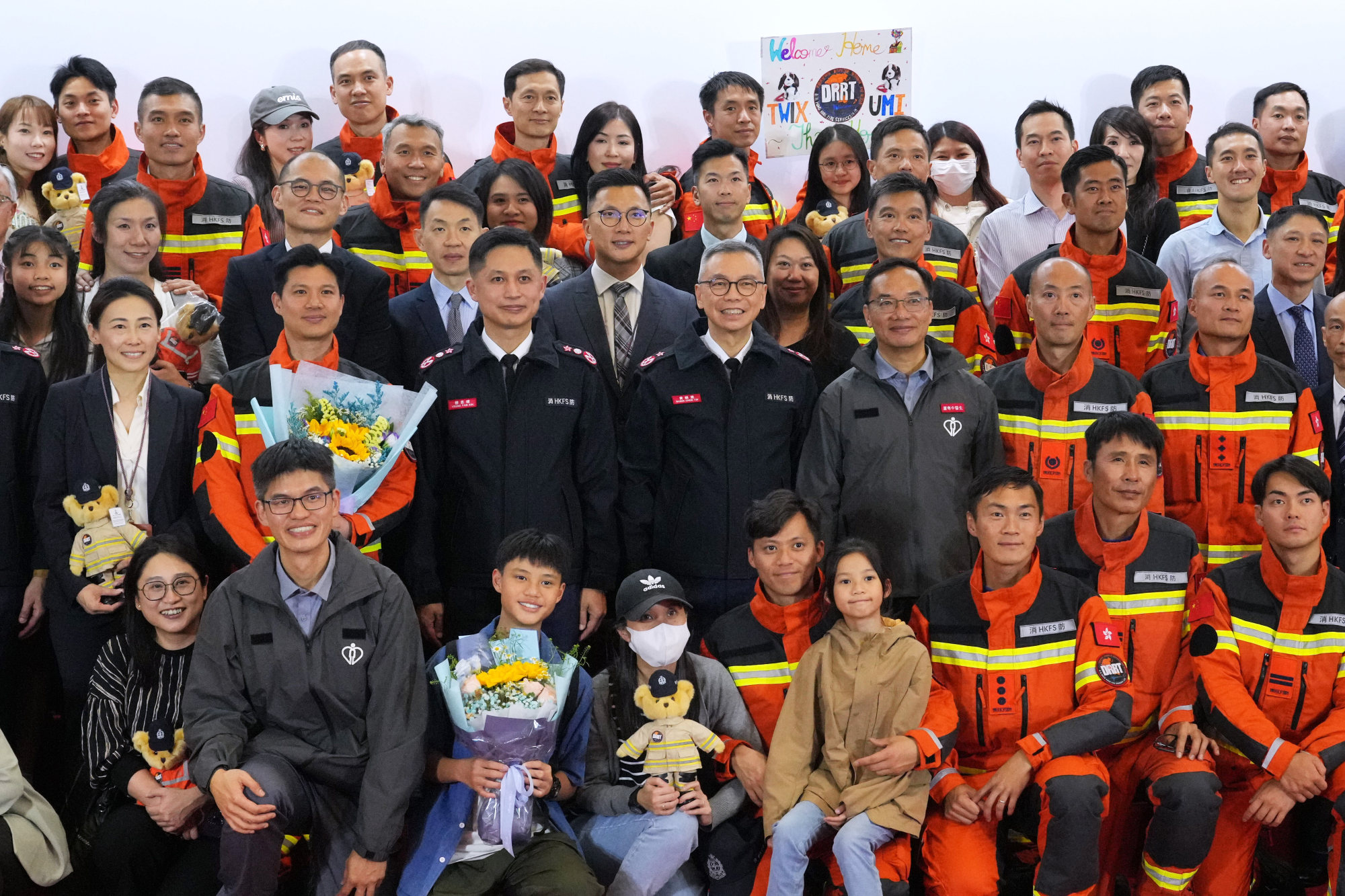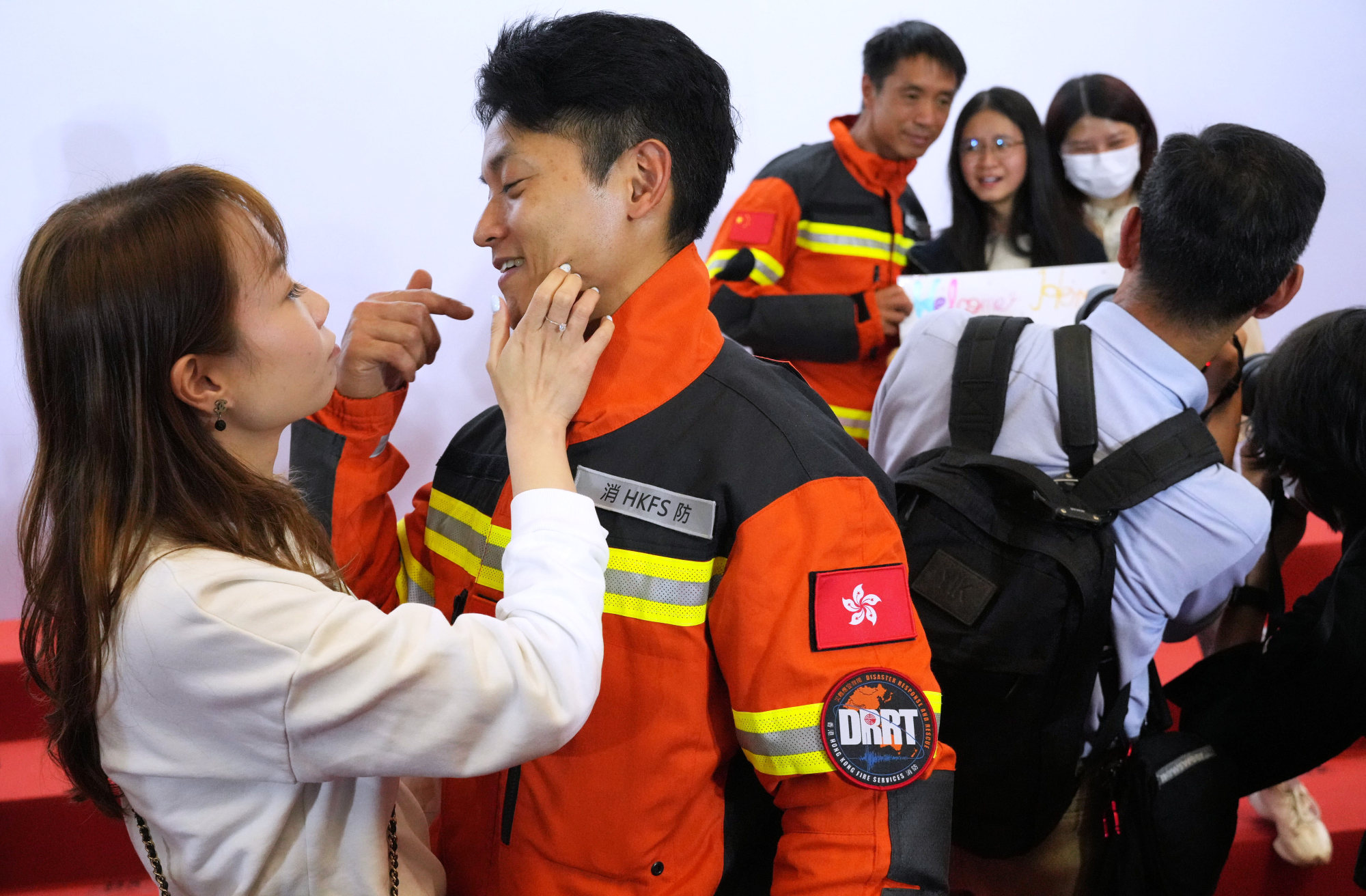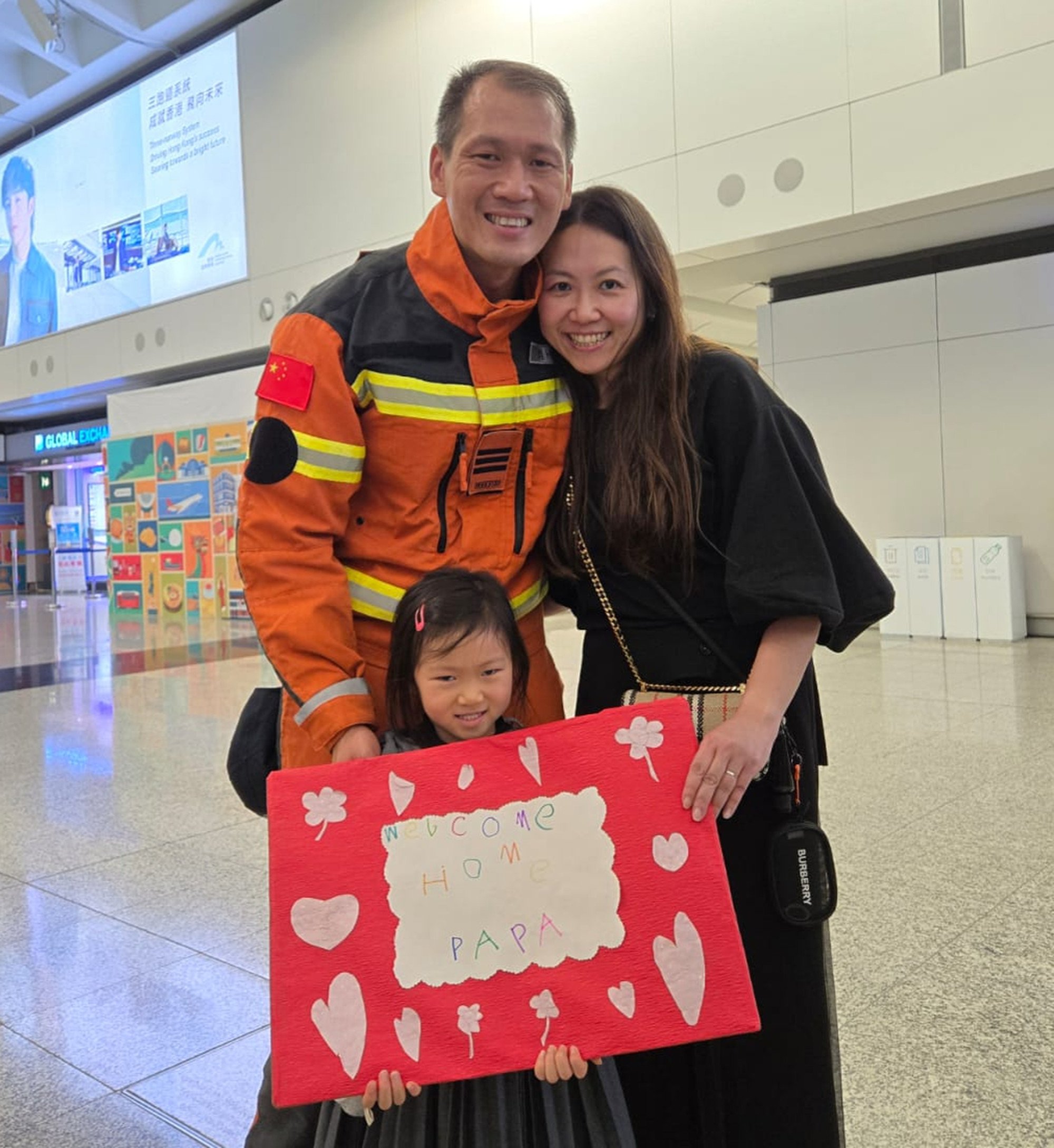
A Hong Kong rescue team received a hero’s welcome upon its return to the city on Wednesday night after spending 11 days in earthquake-stricken Myanmar searching for survivors.
Chief Executive John Lee Ka-chiu and the top Myanmese diplomat in Hong Kong joined a welcome ceremony at Hong Kong airport, along with family members of the rescuers, who left on their mission on March 29.
The 51-strong team comprised 41 rescuers from the Fire Services Department, four Security Bureau workers, two members from the police force, and two doctors and two nurses from the Hospital Authority. Two search dogs, springer spaniels Umi and Twix, were also sent.
Do you have questions about the biggest topics and trends from around the world? Get the answers with SCMP Knowledge, our new platform of curated content with explainers, FAQs, analyses and infographics brought to you by our award-winning team.
The team members were deployed in 61 operations at 57 locations, and along with their mainland Chinese counterparts, found a survivor last Wednesday who had been trapped under the rubble of a hotel in hard-hit Mandalay for more than 125 hours.

Lee said he was proud of the team’s performance.
“This rescue mission was full of challenges. In addition to facing the risk of aftershocks, the rescue team also had to overcome disrupted transport in the disaster zone, communication breakdowns, and severe damage to infrastructure,” he said.
“On top of that, the local weather was extremely hot, with temperatures staying above 40 degrees Celsius for several days. The area was covered in dust and plagued by mosquitoes, making the rescue efforts even more difficult ... I salute you all.”
Han Win Naing, Myanmar’s consul general in Hong Kong, also expressed his gratitude for the rescuers’ selflessness in prioritising the safety of others and risking their lives.
“I would like to express my sincere appreciation to the government and the people of Hong Kong, the Security Bureau, the Fire Services Department, and all the officers involved,” he said.

Team commander Cheu Yu-kok said the hot weather and the mosquitoes had made their rescue mission more difficult.
“The mosquito infestation was serious. We already had mosquito nets, but bathrooms near rescue sites and canteen locations still had lots of mosquitoes. We used sprays and incense, but we were still surrounded by mosquitoes,” Cheu said.
The mission marked the second time Hong Kong rescuers had been deployed overseas after a 59-member team was sent to Turkey in early 2023 following a devastating 7.8 magnitude earthquake.

Cheu said the operation in Turkey had improved the team’s preparedness, as gear such as thick sleeping bags had been bought following the experience of carrying out searches in extreme cold last time.
For the mission in Myanmar, where daytime temperatures exceeded 40 degrees, Cheu said the team had prepared ice machines, fans and ice mats.
He said the firefighters for the mission were assembled in only 15 minutes, with logistics and vaccinations arranged in 10 hours.
Dog handler Sunny Chiang Tin-long said the hot weather had affected both his and Twix’s performance, as they would wake up in the middle of the night.
“During rest hours, it was still very hot, I couldn’t sleep. I would wake up from mosquito bites,” Chiang said.
Chiang, who also joined the Turkey mission, said the cold weather in 2023 did not affect the springer spaniel.
Earlier on Wednesday, the rescuers attended a ceremony with their mainland counterparts in Beijing. The city’s No 2 official, Eric Chan Kwok-ki, Secretary of Security Chris Tang Ping-keung and Director of Fire Services Andy Yeung Yan-kin were in the capital for the event.

The team was dispatched to Myanmar after the Southeast Asian nation was hit by a magnitude 7.7 quake on March 28 that left at least 3,600 dead, including six Chinese nationals. Another 5,000 people were injured and at least 160 others are missing.
The team left for Myanmar on March 29, reaching Mandalay at noon two days later. The team first flew to Yangon, the country’s largest city, before meeting diplomats at the Chinese embassy in the capital Naypyidaw. The group was subsequently deployed to Mandalay.
The team brought nine tonnes of equipment to Myanmar, including life detectors, search tools, satellite phones and drones.
In Mandalay, rescuers searched the rubble for survivors, using blasting tools and other specialised equipment to open up space in the debris.
More from South China Morning Post:
- Hong Kong rescue team pulls survivor from rubble of Myanmar earthquake
- Hong Kong rescue team presses on with search for Myanmar earthquake survivors
- Myanmar earthquake: Hong Kong rescue team begins work in Mandalay
- Hong Kong rescue team set to begin work in quake-hit Myanmar
For the latest news from the South China Morning Post download our mobile app. Copyright 2025.







































